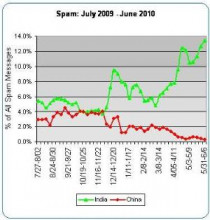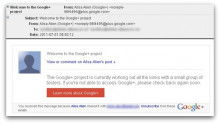How China stopped spam and malware distribution on its domains
I stopped following the spam problem in detail a while ago, but assumed that China was a major source of the stuff. It just sort of seems like it would be, but it turns out this is no longer the case.
In most countries it's cheap and easy to register a domain name. Not in China where the government makes you run things past them. A side-effect was to kill off spamming from Chinese domains. It all began with a directive from CNNIC (China Internet Network Information Center), which administers the .CN domain:









































































